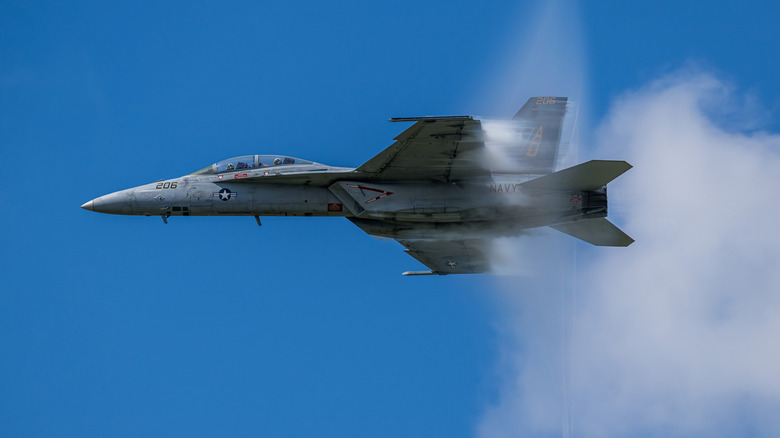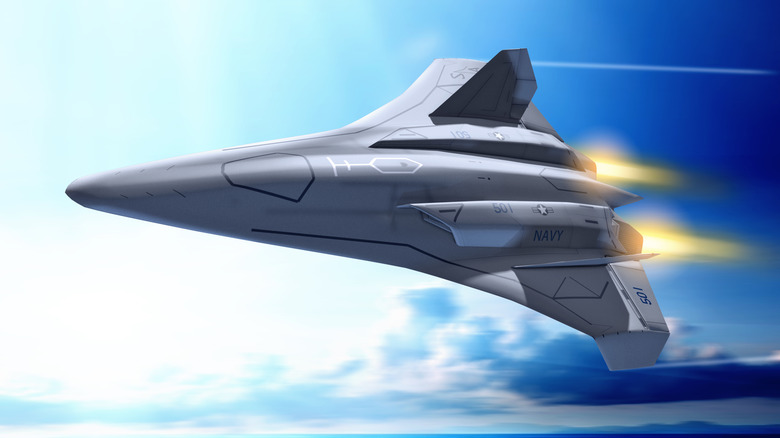In March 2024, the Navy finalized an agreement to purchase 17 Block III F/A-18 Super Hornets from Boeing, at a total cost of $1.1 billion. This acquisition adds 12 F/A-18F and five F/A-18E jets to the fleet, along with a technical data package for both Hornet models and the EA-18G Growler. Rear Adm. John Lemmon, the program executive officer for tactical aircraft at NAVAIR, commented to USNI News, “The technical data package was a crucial part of this negotiation; it is necessary for naval aviation’s operational readiness and post-production sustainment.” This development followed stalled negotiations in 2023 due to the cost per Super Hornet unit.
Advertisement
Reports from 1977 by the US Government Accountability Office indicated that each original F/A-18 Hornet cost $13 million. Adjusting for inflation, the current Super Hornet would cost $72 million, not accounting for the updated technology and materials used in the fuselage. Various factors influence product cost, and as of 2023, estimates priced the naval strike fighter at $55.7 million. However, the actual price might be higher as the original plan included 20 Super Hornets instead of 17.
The Super Hornet’s price tag has been growing

The US Navy and Boeing had previously attempted to negotiate a similar contract, but discussions were halted in 2023 due to cost discrepancies. The Navy intended to allocate $1.15 billion for 20 F/A-18E/F jets, but according to USNI News, Boeing estimated the costs were approaching that of a fifth-generation F-35 Lightning II. Given the staggering $102.1 million cost of the F-35—widely considered excessive for a less advanced aircraft—it appears that the true cost aligns with the inflated figure of $72 billion.
Advertisement
The F-35 features advanced sensors enhancing situational awareness, necessitates a specialized helmet, and offers stealth capabilities that exceed those of the Hornet. Despite these significant price hikes preventing the Navy from purchasing the desired 20 Super Hornets, Congress refused to authorize additional funds for the last three fighters. Rep. Rob Wittman (R-Va.), vice chair of the House Armed Services Committee and chair of the Tactical Air and Land Forces Subcommittee, remarked, “That contract was for 20 aircraft. It’s not going to be 20 aircraft, because we’ve taken so long to get to a final determination on that contract. The number of dollars will not go as far, but those aircraft need to be built.”
Advertisement
The Navy plans to replace the Super Hornet

The Super Hornet, in service since 1999 for 25 years at the time of writing, is expected to remain a vital component of the Navy’s fleet for another two decades. Rear Adm. John Lemmon confirmed in a NAVAIR press release, “The Super Hornet remains a predominant aircraft in the carrier air wing and will continue to provide significant combat capability into the 2040s.” Nonetheless, the Navy is planning for the future, as the Super Hornet—a fourth-generation fighter jet—is likely to be replaced by a sixth-generation fighter.
Advertisement
Lockheed Martin, Boeing, and Northrop Grumman are all vying for the contract to construct the Navy’s next-generation fighter, currently dubbed the F/A-XX. No official design exists yet, but the contractors have presented prototypes. Alongside a state-of-the-art engine, the sixth-gen fighter is expected to feature “advanced sensors, advanced lethality, advanced range, and the capability to integrate manned and unmanned systems,” according to Chief of Naval Operations Adm. Lisa Franchetti’s comments to Air & Space Forces Magazine. The contract is anticipated to be awarded by 2025.
Should everything proceed as planned, the Navy might deploy the new aircraft in the 2030s. With the Air Force delaying its sixth-gen fighter search due to budgetary concerns, the Navy may indeed acquire one first.
Advertisement




